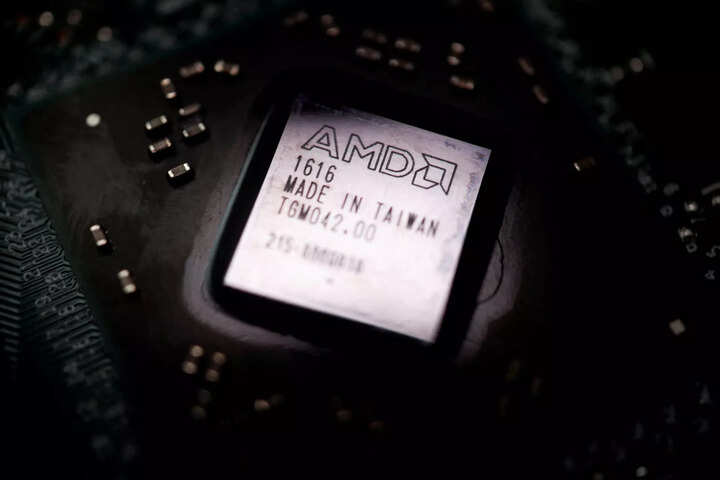After PCs, AMD wants to be inside your cars
AMD has announced two new processors as part of our AMD Automotive XA Artix UltraScale+ family. The XA AU10P and XA AU15P processors are specifically designed for advanced driver-assistance systems (ADAS) sensor applications and are cost-optimised and automotive-qualified.
These processors join the company’s existing portfolio of automotive-grade FPGA and adaptive SoCs, which include the Spartan 7, Zynq 7000, and Zynq UltraScale+ product families.
“In the automotive market, edge sensors like LiDAR, radar, and 3D surround-view cameras are becoming more common, especially with the increasing use of autonomous driving. As the demand for sensors grows, there is a need for faster signal processing, smaller device sizes, and lower costs. Additionally, functional safety is crucial for many autonomous applications. To address these market needs, we are introducing two additions to our AMD Automotive XA Artix UltraScale+ family,” said the company.
The XA Artix UltraScale+ processors have received certification for functional safety up to ASIL-B, which is crucial for the reliability of automotive ADAS sensors such as cameras and LiDARs. This enables our customers, which include car manufacturers, robotaxi developers, and Tier 1 suppliers, to speed up the development of autonomous vehicles.
These cost-optimized chipsets boast high serial bandwidth and signal compute density while maintaining an ultra-compact form factor. Artix UltraScale+ FPGAs are specifically designed to enhance system performance through DSP bandwidth, making them ideal for ADAS edge applications that are cost-sensitive and low-power. These applications include networking, vision and video processing, and secure connectivity.
“As automotive systems have grown in complexity, safety is more critical than ever before with automotive OEMs and Tier 1 suppliers requiring ASIL-B certification for LiDAR, radar and smart edge sensor applications,” said Ian Riches, vice president, global automotive practice, TechInsights. “Through the release of the new XA Artix UltraScale+ devices, AMD is demonstrating its continued commitment and investment in the latest functional safety solutions to serve the automotive market.”
AMD says some manufacturers are already creating advanced ADAS edge systems using new devices. One leading LiDAR company plans to use XA Artix UltraScale+ devices for autonomous applications. Automotive designers can utilize these devices to combine data from multiple edge sensors and perform image and video processing before transferring it to an external SoC. Furthermore, the new XA Artix UltraScale+ devices can improve infotainment features by connecting to multiple displays within the vehicle.
FacebookTwitterLinkedin
end of article

AMD has announced two new processors as part of our AMD Automotive XA Artix UltraScale+ family. The XA AU10P and XA AU15P processors are specifically designed for advanced driver-assistance systems (ADAS) sensor applications and are cost-optimised and automotive-qualified.
These processors join the company’s existing portfolio of automotive-grade FPGA and adaptive SoCs, which include the Spartan 7, Zynq 7000, and Zynq UltraScale+ product families.
“In the automotive market, edge sensors like LiDAR, radar, and 3D surround-view cameras are becoming more common, especially with the increasing use of autonomous driving. As the demand for sensors grows, there is a need for faster signal processing, smaller device sizes, and lower costs. Additionally, functional safety is crucial for many autonomous applications. To address these market needs, we are introducing two additions to our AMD Automotive XA Artix UltraScale+ family,” said the company.
The XA Artix UltraScale+ processors have received certification for functional safety up to ASIL-B, which is crucial for the reliability of automotive ADAS sensors such as cameras and LiDARs. This enables our customers, which include car manufacturers, robotaxi developers, and Tier 1 suppliers, to speed up the development of autonomous vehicles.
These cost-optimized chipsets boast high serial bandwidth and signal compute density while maintaining an ultra-compact form factor. Artix UltraScale+ FPGAs are specifically designed to enhance system performance through DSP bandwidth, making them ideal for ADAS edge applications that are cost-sensitive and low-power. These applications include networking, vision and video processing, and secure connectivity.
“As automotive systems have grown in complexity, safety is more critical than ever before with automotive OEMs and Tier 1 suppliers requiring ASIL-B certification for LiDAR, radar and smart edge sensor applications,” said Ian Riches, vice president, global automotive practice, TechInsights. “Through the release of the new XA Artix UltraScale+ devices, AMD is demonstrating its continued commitment and investment in the latest functional safety solutions to serve the automotive market.”
AMD says some manufacturers are already creating advanced ADAS edge systems using new devices. One leading LiDAR company plans to use XA Artix UltraScale+ devices for autonomous applications. Automotive designers can utilize these devices to combine data from multiple edge sensors and perform image and video processing before transferring it to an external SoC. Furthermore, the new XA Artix UltraScale+ devices can improve infotainment features by connecting to multiple displays within the vehicle.
FacebookTwitterLinkedin
end of article
